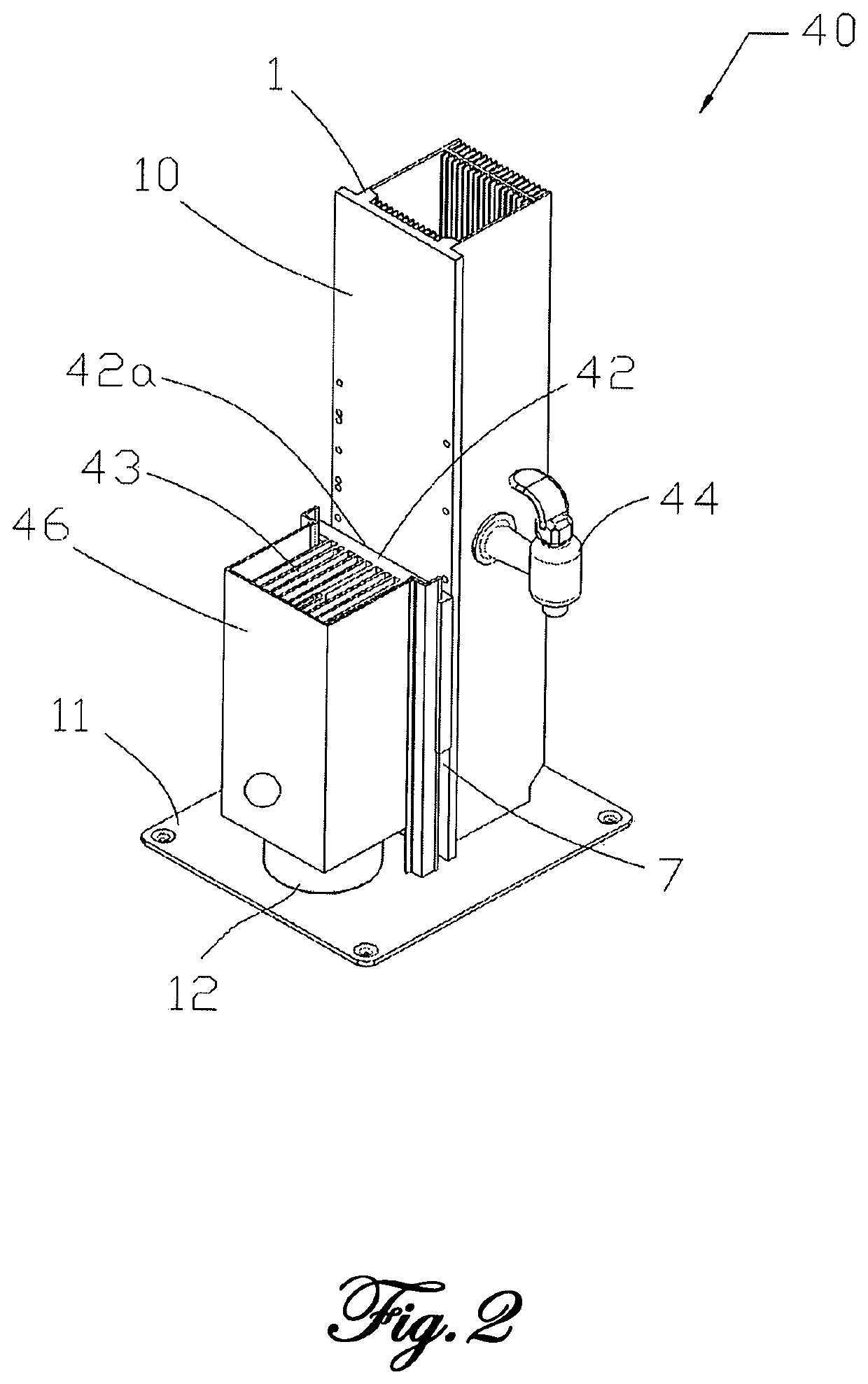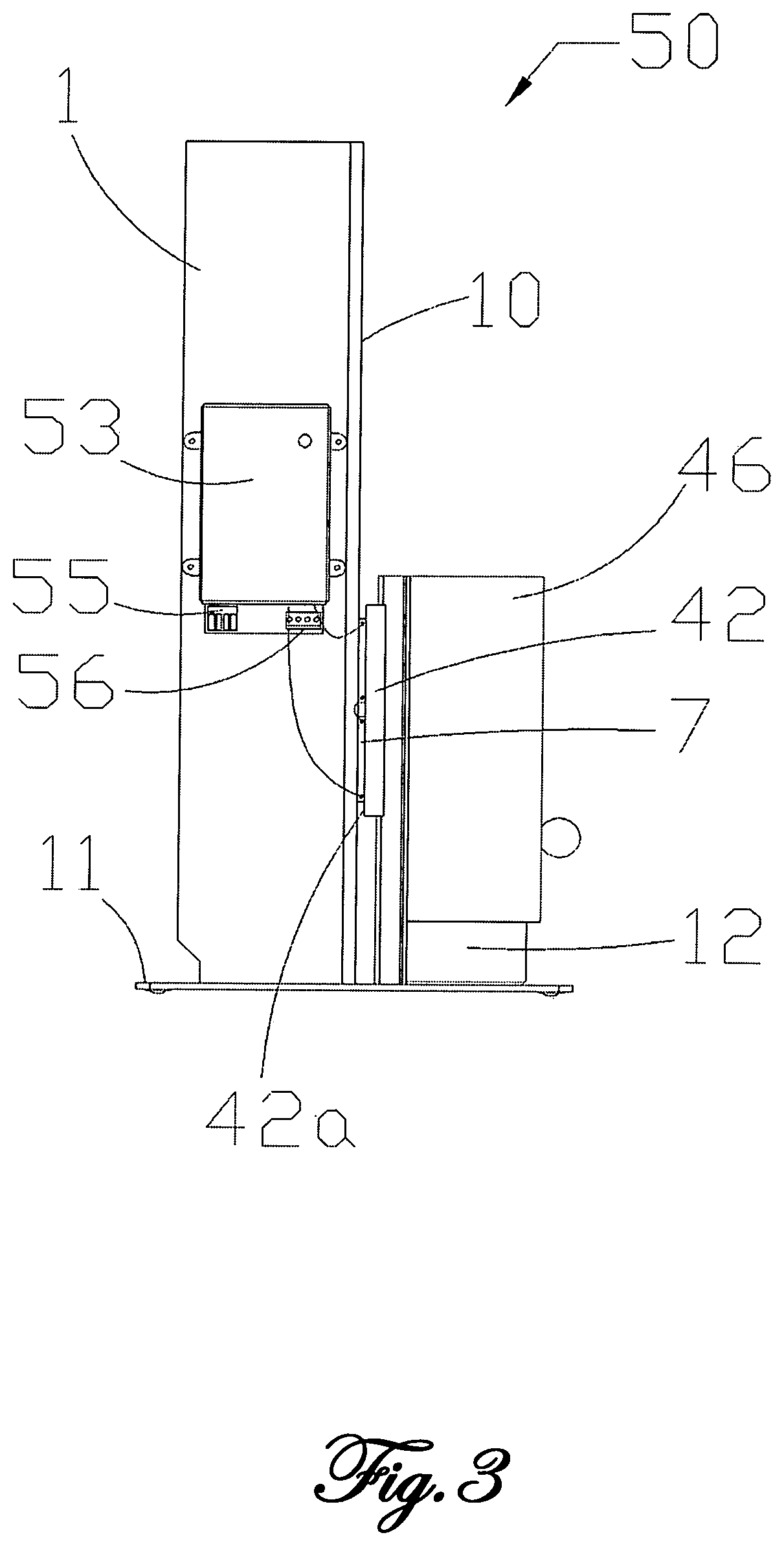Thermoelectric generator using in-situ passive cooling
a technology of passive cooling and thermoelectric generator, which is applied in the direction of electrochemical generators, secondary cells servicing/maintenance, electrical apparatus, etc., can solve the problems of insufficient cooling, thermoelectric module failure, and inability to maintain a stable cold side surface temperature, etc., to achieve greater heat dissipation, large liquid volume, and large heat capacity
- Summary
- Abstract
- Description
- Claims
- Application Information
AI Technical Summary
Benefits of technology
Problems solved by technology
Method used
Image
Examples
embodiment 80
[0049]FIG. 8 is an exploded view of an embodiment 80, using thermoelectric generator systems arranged to produce voltage from the heated exhaust of a wood burning stove 20 or other hearth device. This arrangement absorbs heat from the exhaust using heat absorbers 42 and conducts the heat to the hot side of modules 7. The cold side of modules 7 is maintained by the heat exchanger vessels 1. Uniquely, the two heat exchanger vessels 1 are mounted in the cold air return pipes 23 of the stove 20. Cold air return pipes 23 with an inside diameter of at least 102 mm are designed to fit over each heat exchanger vessel 1 to allow cool air to flow past external fins 9 of each heat exchanger vessel 1. This convective cooling improves the removal of heat from the cold side of modules 7. A servo mechanism consisting of damper 22, a stepper motor 21, and temperature feedback measurement sensor 82 is operably configured to control the position of the damper 22 in response to the measured temperatur...
embodiment 60
[0051]FIG. 9 is an isometric view of an embodiment 60 using two heat exchanger vessel assemblies 30 of FIG. 1, two heat absorber plates 62, and heat sourced from a combustion site of a hearth device such as a natural gas fireplace appliance 65. Two heat absorber plates 62 are attached to the steel rear side of the fireplace 65 conduct heat to the hot side of thermoelectric modules (not visible in this view) and two heat exchanger vessels 1 are positioned to dissipate heat from the cold side of each module. In addition, as part of a typical gas fireplace installation, there are two 12 Volt D.C. blower fan motors 66 that are primarily intended to direct the heat from the inside of the fireplace through a vent near the top of the enclosure to warm the external air in the area where the fireplace is installed. In this embodiment, the fan motors are oriented to also allow cool air to flow past external fins 9 (indicated by the bold arrows), of the heat exchanger vessel 1. When the voltag...
PUM
| Property | Measurement | Unit |
|---|---|---|
| volume | aaaaa | aaaaa |
| height | aaaaa | aaaaa |
| internal diameter | aaaaa | aaaaa |
Abstract
Description
Claims
Application Information
 Login to View More
Login to View More - R&D
- Intellectual Property
- Life Sciences
- Materials
- Tech Scout
- Unparalleled Data Quality
- Higher Quality Content
- 60% Fewer Hallucinations
Browse by: Latest US Patents, China's latest patents, Technical Efficacy Thesaurus, Application Domain, Technology Topic, Popular Technical Reports.
© 2025 PatSnap. All rights reserved.Legal|Privacy policy|Modern Slavery Act Transparency Statement|Sitemap|About US| Contact US: help@patsnap.com



